I am Gregory A O’Brien of Go Pedal Boards a new guitar effects pedal board system. The design was the result of necessity. As a traveling musician I bought and modified a few of the best brands and cheapest brands of pedal boards trying to get just what I needed.
I needed a system that would work for me in multiple settings and would work with all the different types of gear and new technology I needed based on the venue size and type of show.
I am a professor of Electrical Engineering, Music Technology, and non-linear waveform analysis, as well as a national touring musician. I depend on my gear to accommodate the many situations I find myself in, for performing, instructional use and for use in the recording studio.
I have found that with the advances in music technology, guitar effects pedals and the types of effects and available technology in pedal form and the different types of musicians using a pedal board, the technology of the time was just not getting the job done. The average musician now needs many pieces of technology to run both self run-productions and large-scale show productions.
Most effects pedal boards are set up to do the most basic thing. Most of them will not even do that well; it was hard to even find a good system to “hold the pedals” so that it makes it easy to move your pedal rig as needed.
I found that most boards being made were not anywhere near complimentary to new technology or able to blend and accommodate the use of old technology with the new technology. Some musician would accomplish this after hundreds if not thousands of dollars to have custom pedal boards made or have multiple boards made for each specific use.
The Go Pedal Board system has a modular patch bay whole system, built in that will accommodate many different types of connectors needed to route your signal to the places you want it to go to. This helps to setup and to route signal through your rig. It also takes into account there are different dominant traits of the user, right-handed or left-handed. It also has a space saving method of using a tiered system. This gives you a way to get more pedals needed in a smaller space. It is also a way to improve the accuracy of foot articulation of your pedals and a built in consideration of Foot and hip fatigue and back problems while shifting your weight when holding a guitar or bass strapped to you.
Some of the other innovations are the addition of the USB dual charge system for people using their I-pod or I-pad or Cell phones in their gigs or productions The modular power connector system and curtesy extension power system.
We put wholes that are made in every board to accommodate the multitude of connectors for different ways to route signal flow through your board. Whether it is a one tier, two tiers or three tiers board. this is so the end user can buy and build their own patch bay connector system to match the equipment they are familiar with or use on a regular basis.
The Go Pedal Board system has equipment such as our IEC power module.
patch bay placement in such a way that a single cable bundle called a snake cable can be built to carry all the different types of cables needed and used for the board so it will keep cable clutter down in the guitarist work area making it a safer utility device.
The 7-degree rake designed into each tier gives the user a better view of the pedals and all the controls, compared to them being on a flat surface of a singular angled surface. It also creates a comfortable placement so if you have multiple rows of pedals you can articulately hit all the right switches and control knobs without fear of changing the pedals closes to the one you are activating.
Go Pedal Board systems allow for built in mounting options for different manufacturers power supplies. The decks of the tiers have been made to hold the biggest sizes of pedals for those who still use the older pedals and will not fit the newer boards.
These are just a few of the innovations that build a better pedal board.
Gregory A O’Brien
